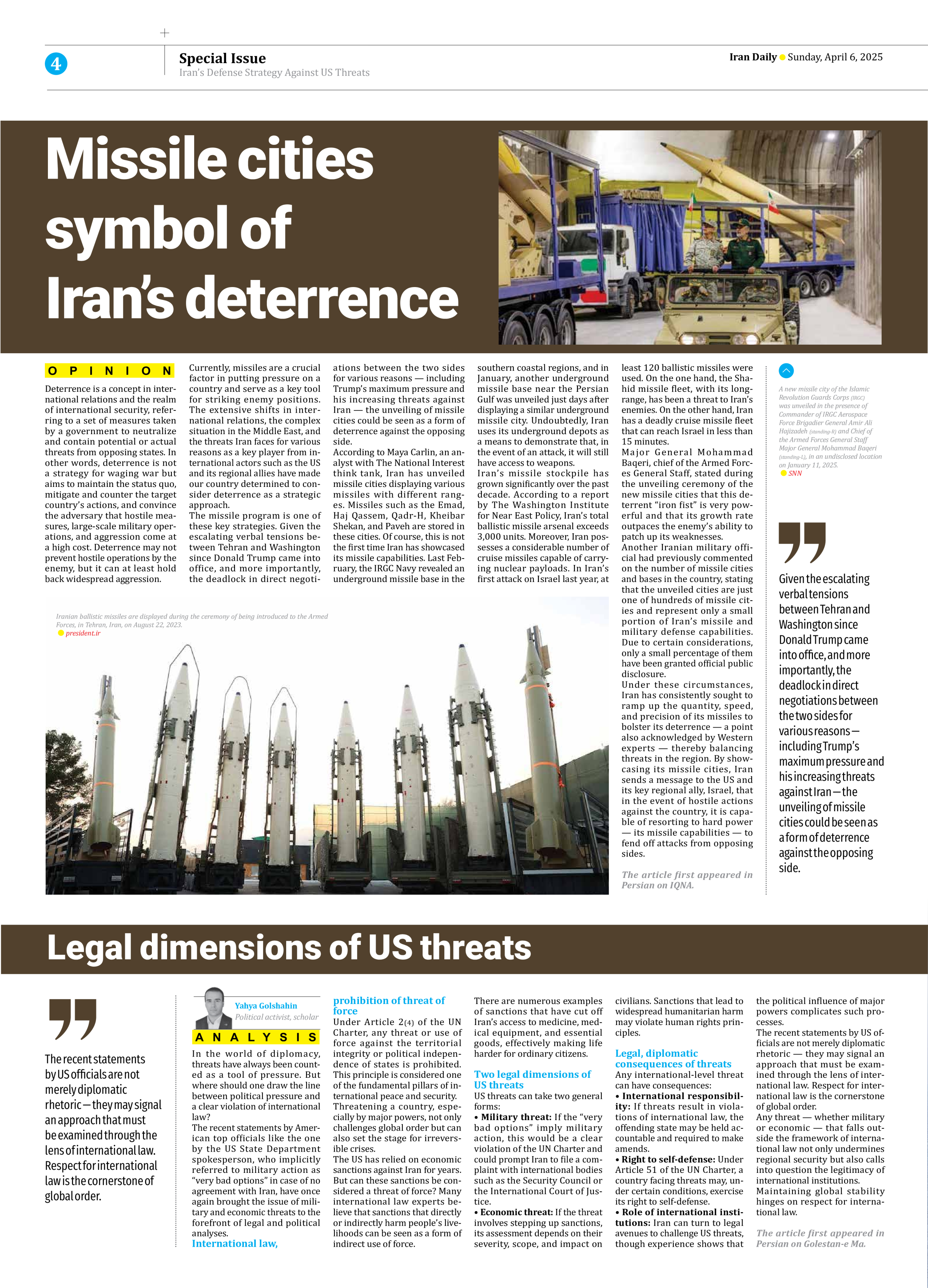
Legal dimensions of US threats
Yahya Golshahin
Political activist, scholar
In the world of diplomacy, threats have always been counted as a tool of pressure. But where should one draw the line between political pressure and a clear violation of international law?
The recent statements by American top officials like the one by the US State Department spokesperson, who implicitly referred to military action as “very bad options” in case of no agreement with Iran, have once again brought the issue of military and economic threats to the forefront of legal and political analyses.
International law, prohibition of threat of force
Under Article 2(4) of the UN Charter, any threat or use of force against the territorial integrity or political independence of states is prohibited. This principle is considered one of the fundamental pillars of international peace and security.
Threatening a country, especially by major powers, not only challenges global order but can also set the stage for irreversible crises.
The US has relied on economic sanctions against Iran for years. But can these sanctions be considered a threat of force? Many international law experts believe that sanctions that directly or indirectly harm people’s livelihoods can be seen as a form of indirect use of force.
There are numerous examples of sanctions that have cut off Iran’s access to medicine, medical equipment, and essential goods, effectively making life harder for ordinary citizens.
Two legal dimensions of US threats
US threats can take two general forms:
• Military threat: If the “very bad options” imply military action, this would be a clear violation of the UN Charter and could prompt Iran to file a complaint with international bodies such as the Security Council or the International Court of Justice.
• Economic threat: If the threat involves stepping up sanctions, its assessment depends on their severity, scope, and impact on civilians. Sanctions that lead to widespread humanitarian harm may violate human rights principles.
Legal, diplomatic consequences of threats
Any international-level threat can have consequences:
• International responsibility: If threats result in violations of international law, the offending state may be held accountable and required to make amends.
• Right to self-defense: Under Article 51 of the UN Charter, a country facing threats may, under certain conditions, exercise its right to self-defense.
• Role of international institutions: Iran can turn to legal avenues to challenge US threats, though experience shows that the political influence of major powers complicates such processes.
The recent statements by US officials are not merely diplomatic rhetoric — they may signal an approach that must be examined through the lens of international law. Respect for international law is the cornerstone of global order.
Any threat — whether military or economic — that falls outside the framework of international law not only undermines regional security but also calls into question the legitimacy of international institutions.
Maintaining global stability hinges on respect for international law.
The article first appeared in Persian on Golestan-e Ma.







